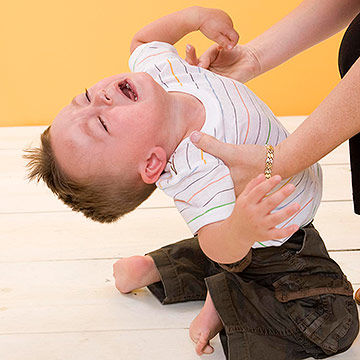Do you feel like you’re constantly nagging your children? Do you repeat yourself over and over again? Is “no” the most frequent word in your household? Do you ever find yourself wishing your child would listen and do what they are asked the first time you asked them?
Are you having more negative interaction then positive interactions with your kids throughout the day?

I hate to break it to you BUT if you want your child’s behavior to change you must start by changing yours!
If you have created an environment where you repeat a demand 5 times, and then finally follow through on that demand, your child will naturally learn to wait for that 5th demand before they make any attempt at doing what you asked. Or after that 5th demand you just put their jacket on for them, or clean up the toys. Your child learns if I wait long enough, they’ll do it for me.
You have the power to set your child up for success by changing your behaviors. You need to create an environment where there are CONSEQUENCES for your child’s behaviors.
CONSEQUENCES DO NOT EQUAL PUNISHMENTS!
In the ABA world consequences are simply what happen after a specific behavior occurs. As parents you need to start creating POSITIVE consequences for the behaviors you want to be seeing from your kids!
Too often the negative behaviors get the bigger reaction, and more of your attention.
For children, attention is attention. Negative attention is just as reinforcing as positive attention. Negative attention is all those times you say “no”, “stop”, “don’t do that” , you run over to stop your child from taking a toy from their sibling, you yell across the room for them not to climb on the TV stand while you’re cooking dinner, or you constantly return them to “time out” after they hit their sibling. In those times where you’re addressing a negative behavior your child is learning I have your undivided attention. Your undivided attention is all your child wants.
Start throwing the party when your child does what you ask them the first time you ask them to do it. You need to be sure all the positive behaviors you see from your child get more attention then those pesky negative ones. If you do this, you’ll begin to see all the things you want your child to be doing more and more because they will quickly learn good things happen when I do good stuff.

You need to start showing your child what you want to see from them with your words, actions, and attention. A child doesn’t inherently know what a good or bad behavior is. They learn from their environment what behaviors get them what they want or need. It is our responsibility as parents, caregivers, and teacher to teach them what behaviors are considered good or bad by our interactions with them.
Catch them being good and make a big deal about it! Start using statements like “I love how you’re sharing with your sister”, “Look at you sitting so quietly” etc. Hugs, smiles, thumbs up, squeezes may be all you need to reinforce behaviors. Now, you may need to use some tangible incentives for those bigger behaviors we need to change, but we address that later!
Another key component to creating an environment where non-compliance is a thing of the past is to start shortening your demands. Make demands short and sweet, and avoid those dreaded repeated demands!
Demands of the Past:
“Brush your teeth, it’s time for bed! I need you to brush your teeth. Bedtime, Brush your teeth! Why aren’t you brushing your teeth?”
Demands of the present:
First brush your teeth and then story time!

This is called a first/then statement, and it’s based on the evidence-based strategy of the Premack Principle (look it up!).
First…(action)….., then….(get something OR do something reinforcing)….
Let your child know that something good is coming and that they have some control over the situation. They can choose to engage in that first behavior in order to get the thing promised to them. If they don’t engage in the first behavior they do not access the item or activity promised. So be sure to pick more preferred and reinforcing “then” items.
I know you’re probably thinking to yourself what if my child doesn’t do what I ask them to do? How do I follow through on each and every demand I place? ……I promise I have the answer, but that’s a discussion for another time. I gotta keep you wanting more 😉
The bottom line: the natural thing to do as a parent is reward good behavior, but let’s make sure we’re doing it, we’re verbalizing it, and we’re consistently rewarding that positive behavior!
If you have any questions or seek more information about Applied Behavior Analysis, please feel free to contact me at (518)899-9235 or Slaraway@newmeadow.org.
Additionally, please join us for Newmeadow’s Applied Behavior Analysis Parent Trainings offered this fall!
